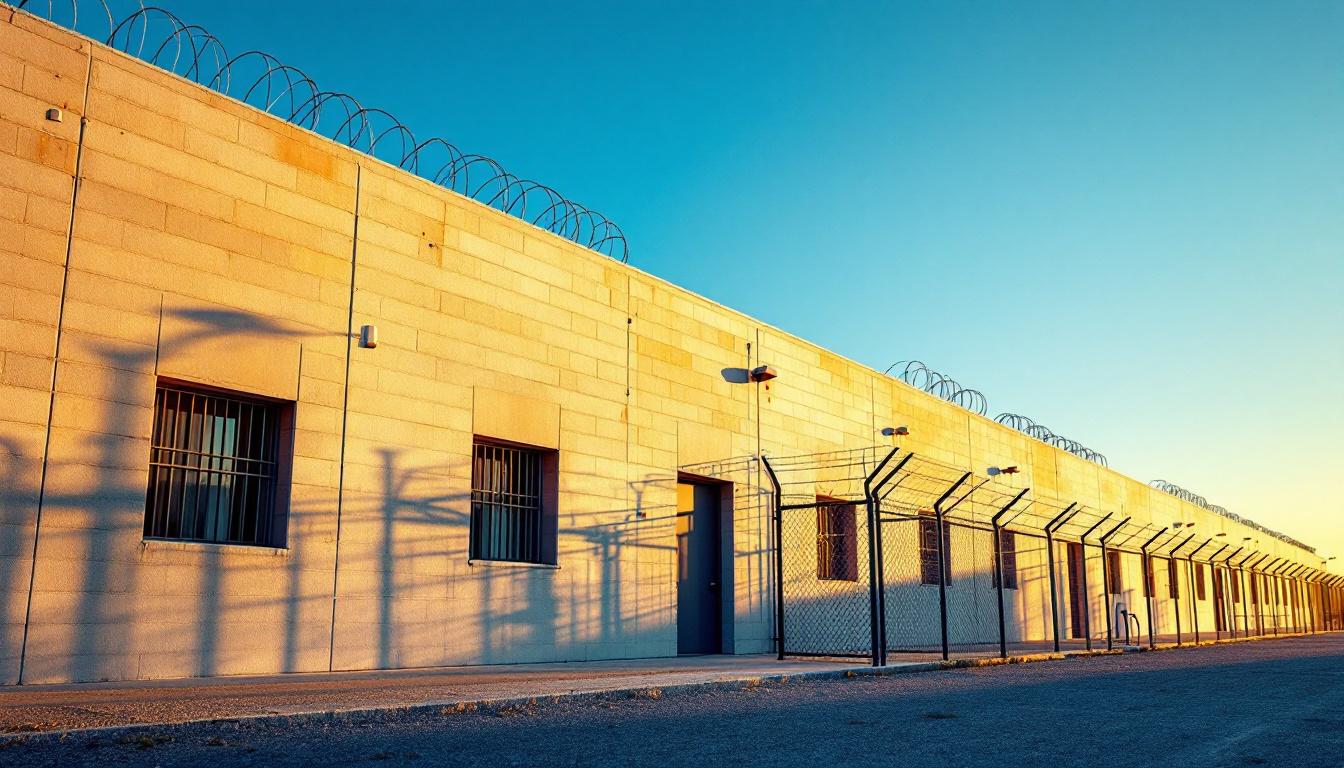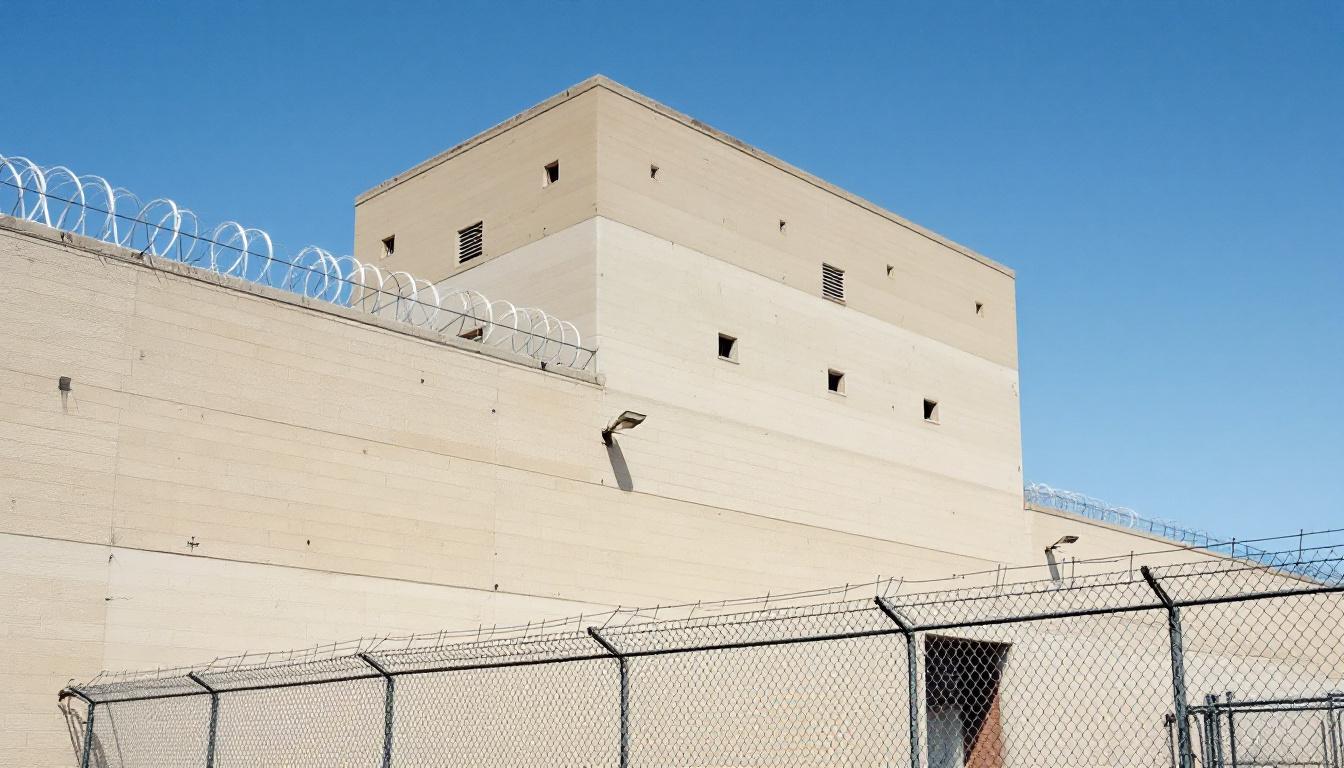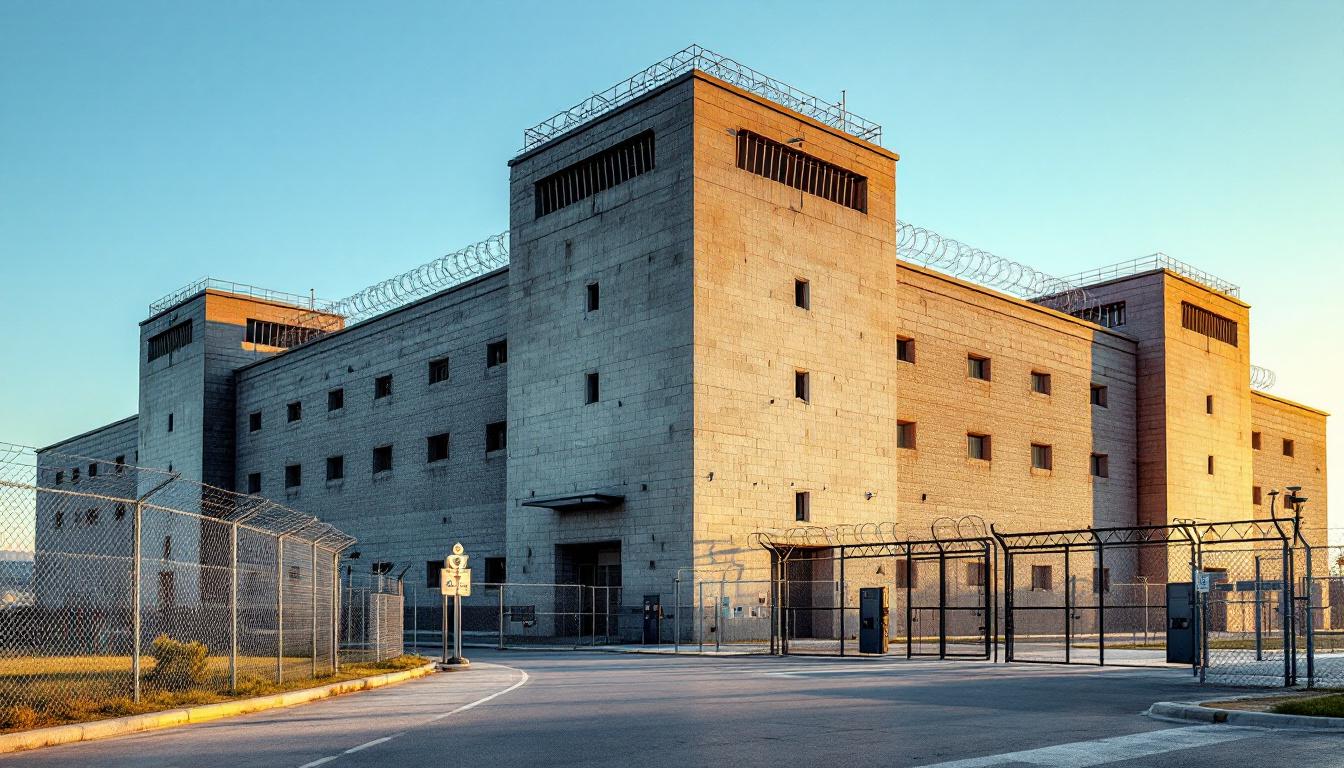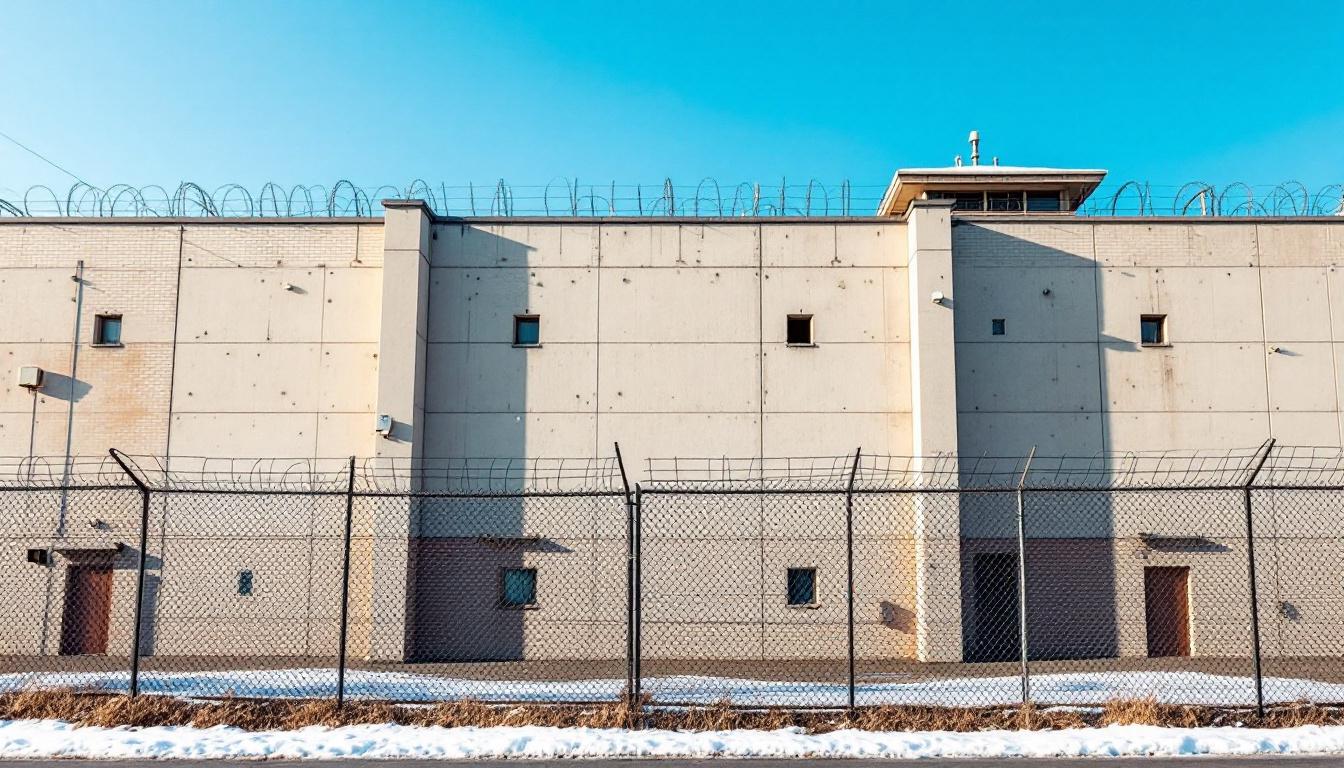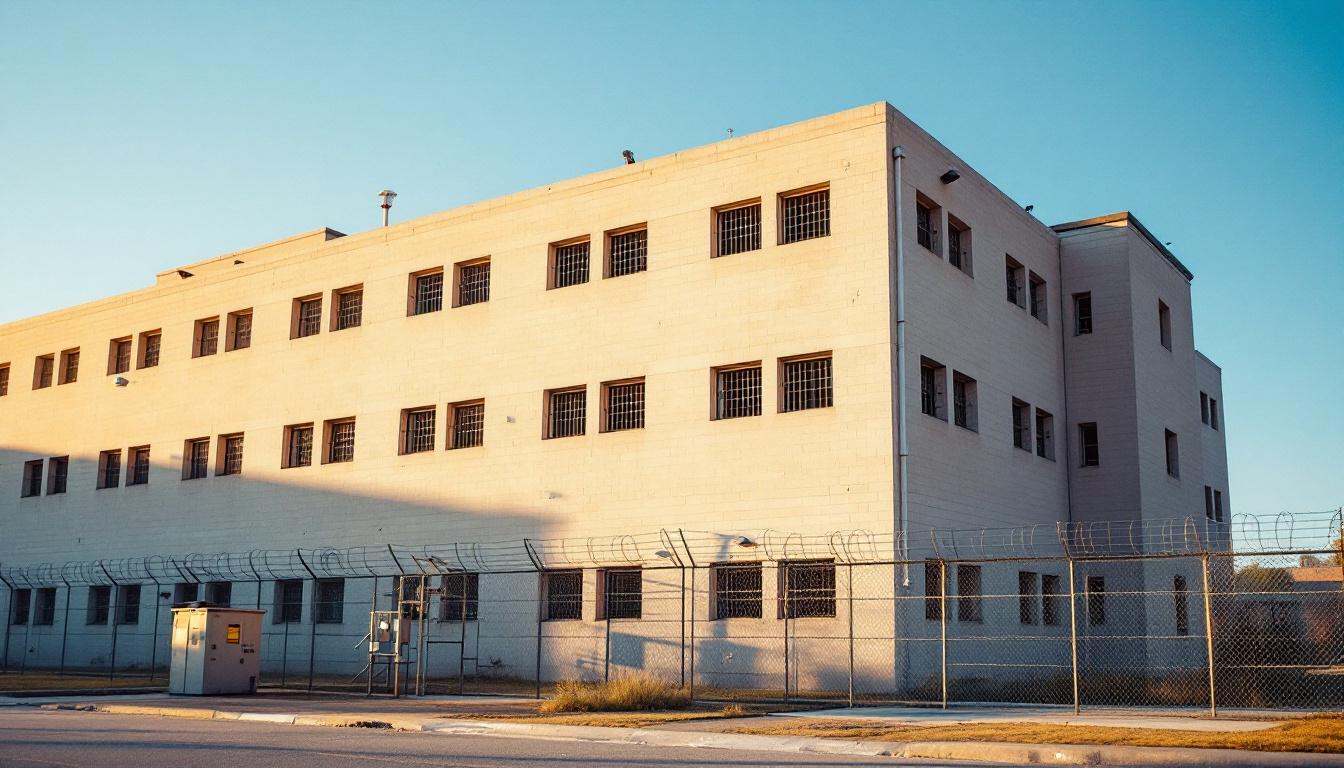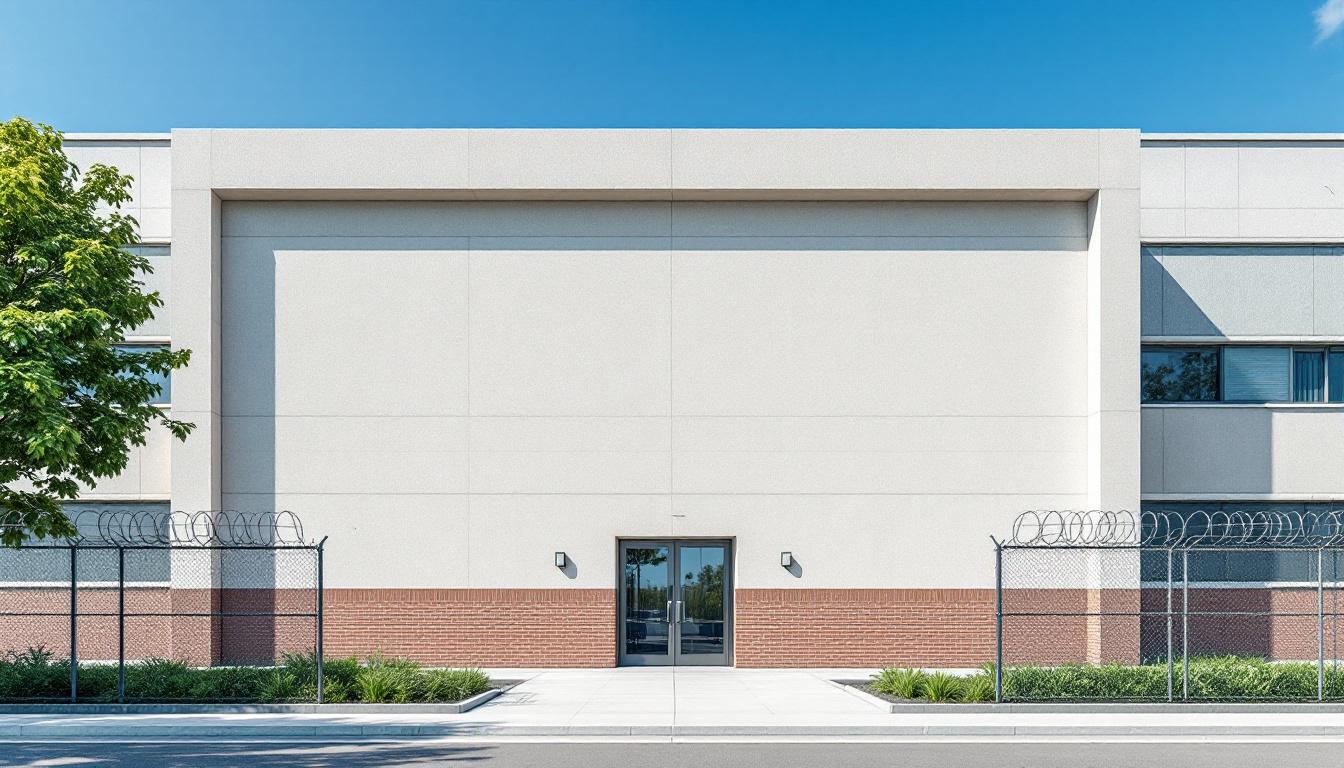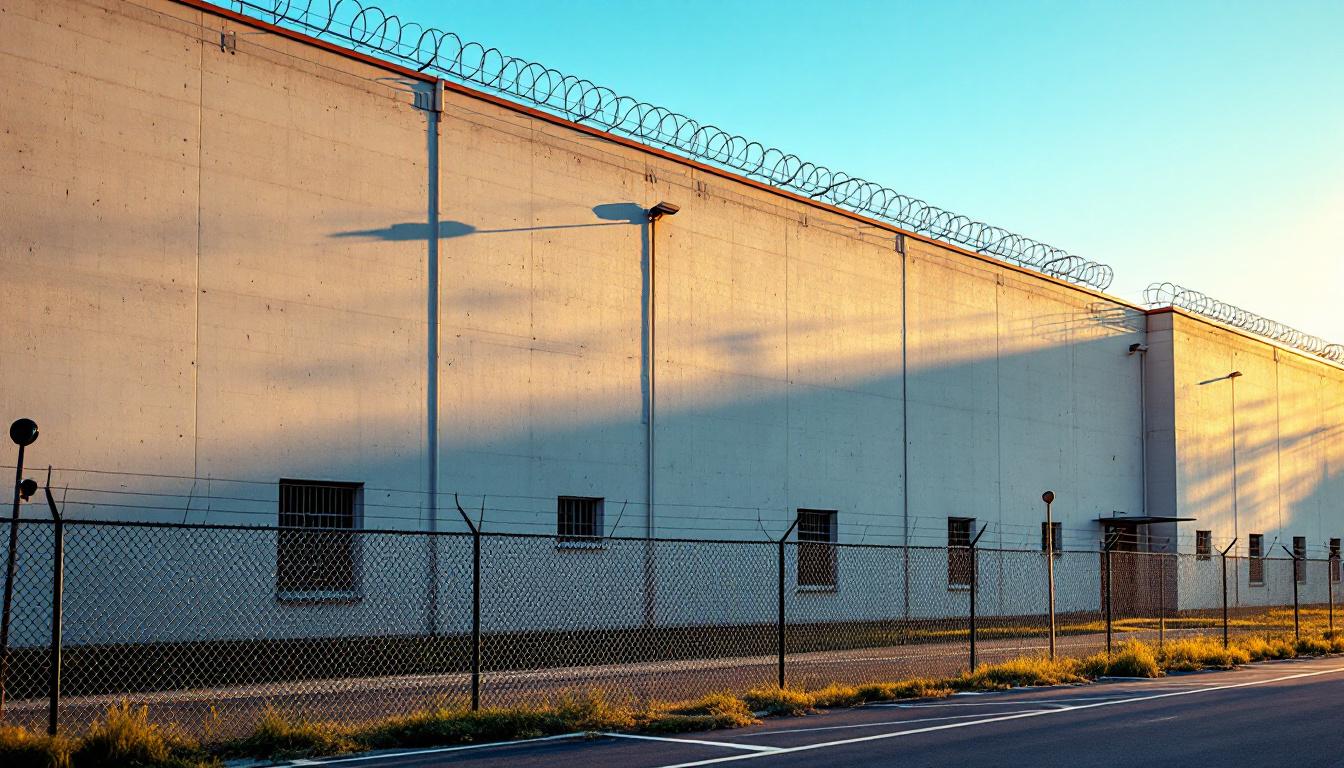
Quick Navigation
How to contact an inmate at Stewart Detention Center
This comprehensive guide will walk you through how to connect with an inmate at Stewart Detention Center. Follow the steps below to find an inmate and send letters and photos:
- Search for the inmate using our search tool below
- Create your account or log in to Penmate
- Write your message (up to 6,000 characters)
- Send instantly - inmates receive printed copies daily
Find an Inmate
Search for an inmate to start communicating today
Tip: You can search by first name, last name, or inmate ID number
To contact a person at Stewart Detention Center start by searching for the person on the official facility website. Perform a search by following these steps:
- Step 1: Enter their first name and last name into the search form and click "Search"
- Step 2: Locate their inmate record
- Step 3: Write down their Inmate ID and any housing information provided
Important! Be sure to enter the person's full name. Nicknames should not be used.
How to Send Messages to Inmates

You can use your phone or computer to send emails, letters, and photos to an inmate. Messages are sent electronically to inmate tablets or kiosks at the facility. If you would like to send a message, start by searching for an inmate at Stewart Detention Center.
Sending Photos and Postcards

A great way to send love and support to a loved one at Stewart Detention Center is to send photos and postcards. It only takes a few minutes to send photos from your phone and it makes a huge difference. You can also mail postcards with words of support and inspiration, or design your own postcard for special moments like birthdays and holidays.
Important! Be sure not to send any explicit photos or they may not be approved by the facility. You can also use a photo printing app like Penmate to make sure your photos are printed at the correct size (4x6 or 3x5) and are mailed according to the rules and regulations of Stewart Detention Center.
Frequently asked questions about Stewart Detention Center
-
How long does it take to deliver a message?
If you're sending an email message your letter is usually delivered within 24-48 hours. For messages sent via mail you should expect delivery within 3-7 days. All messages will need be approved by Stewart Detention Center.
-
How much does it cost to send a message to Stewart Detention Center?
You can send a message free using your phone or mail a message via USPS for the price of a $0.60 stamp and envelope. You can also purchase credits or e-stamps from services starting at $1.99.
-
What services can I use to contact an inmate at Stewart Detention Center?
Penmate
You can use Penmate to send letters and photos to an inmate from your phone. It's an easy way to stay in touch during your loved one's incarceration. Use the inmate locator to find an inmate's location and contact information, then you can send messages within a few minutes.
Securus messaging
Securus may be another option for communicating with an inmate at Stewart Detention Center. You can create a friends and family account and purchase credits to send messages. All messages will be reviewed and must be approved by the facility.
JPay
Some county jails and state prisons may support sending messages with JPay. You must register an account with the system, find your loved one, and purchase stamps to send messages. For some locations you can also attach photos.
Smart Jail Mail
You may also check if Smart Jail Mail is available at Stewart Detention Center. Smart Jail Mail is operated by Smart Communications and has contracted with some state and county jails. After purchasing credits, your messages and photos are sent to the facility, printed out, and then handed out to your loved one.
-
What is the mailing address of Stewart Detention Center?
Mailing address:
Stewart Detention Center
146 Cca Rd
Lumpkin, GA 31815
Phone: (229) 838-5000Business hours:
- Monday: 8:00 AM – 2:00 PM
- Tuesday: 8:00 AM – 2:00 PM
- Wednesday: 8:00 AM – 2:00 PM
- Thursday: 8:00 AM – 2:00 PM
- Friday: 8:00 AM – 6:30 PM
- Saturday: Open 24 hours
- Sunday: 8:00 AM – 6:30 PM
-
What are the visiting hours at Stewart Detention Center?
Visiting hours at Stewart Detention Center vary by housing unit and security level. Generally, visits are scheduled on weekends and holidays, with some facilities offering weekday visits. Contact the facility directly at (229) 838-5000 or check their website for the current visiting schedule. Visits typically last 30-60 minutes and must be scheduled in advance.
-
What items are prohibited when sending mail to Stewart Detention Center?
Prohibited items typically include: cash, personal checks, stamps, stickers, glitter, glue, tape, staples, paperclips, polaroid photos, musical or blank greeting cards, hardcover books, magazines with staples, and any items containing metal or electronics. Only send letters on plain white paper with blue or black ink. Photos must be printed on regular photo paper (no Polaroids). Always check with Stewart Detention Center for their specific mail policies.
-
How do I send money to an inmate at Stewart Detention Center?
You can send money to an inmate at Stewart Detention Center through several methods: 1) Online using JPay, Access Corrections, or the facility's approved vendor, 2) Money orders mailed directly to the facility with the inmate's name and ID number, 3) Kiosks located in the facility lobby, or 4) Over the phone using a credit or debit card. Fees vary by method, typically ranging from $2.95 to $11.95 per transaction.
-
Can I schedule a video visit with an inmate at Stewart Detention Center?
Many facilities now offer video visitation as an alternative to in-person visits. At Stewart Detention Center, video visits may be available through services like Penmate, Securus Video Connect, GTL, or ICSolutions. Video visits typically cost $10-20 for 20-30 minutes and must be scheduled in advance. You'll need a computer or smartphone with a camera and reliable internet connection. Contact the facility for their specific video visitation policies and approved vendors.
-
What identification do I need to visit an inmate at Stewart Detention Center?
All visitors must present valid government-issued photo identification such as a driver's license, state ID, passport, or military ID. Minors must be accompanied by a parent or legal guardian who can provide the minor's birth certificate. Some facilities require visitors to be on the inmate's approved visitation list, which may require a background check. Contact Stewart Detention Center for specific ID requirements and visitor approval procedures.
-
How can I find out an inmate's release date?
To find an inmate's release date at Stewart Detention Center, you can: 1) Use the online inmate search tool if available, 2) Call the facility's records department, 3) Contact the inmate's case manager or counselor, or 4) Have the inmate provide this information during a call or visit. For privacy reasons, some facilities only release this information to immediate family members.
Facility Overview
Official Website
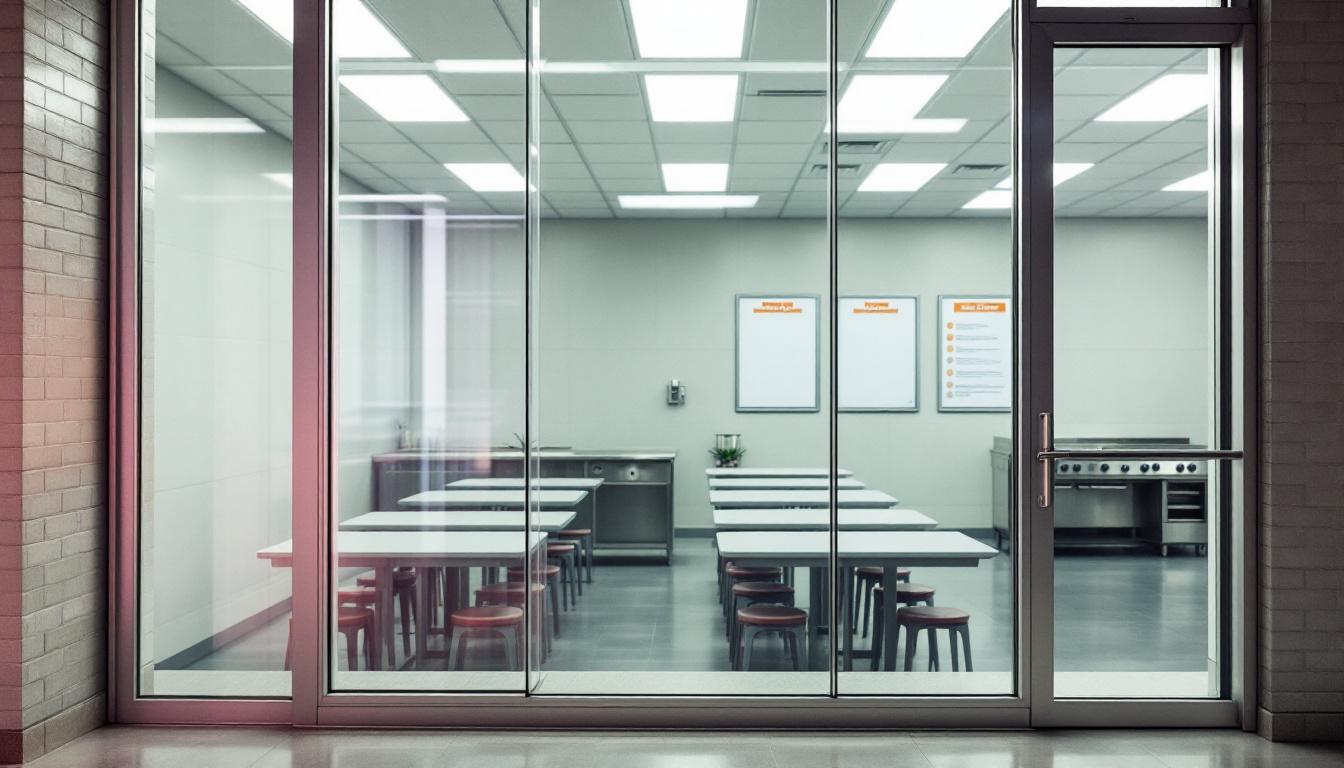
About Stewart Detention Center
Nestled in the rural landscape of Lumpkin, Georgia, Stewart Detention, GA operates as a significant component within the state’s broader correctional network, serving residents who may benefit from structured programming and comprehensive support services. This GA correctional facility typically maintains focus on preparing individuals for successful community reintegration through various educational and vocational opportunities that address the diverse needs of its population.
The detention center generally emphasizes evidence-based approaches to rehabilitation, often incorporating educational programming that may include literacy development, vocational training, and life skills preparation. Residents services typically encompass healthcare coordination, mental health support, and substance abuse programming, designed to address underlying factors that may contribute to recidivism. The facility’s position within Georgia’s correctional system allows for coordination with regional resources and community partnerships that support transition planning and post-release success.
Stewart Detention’s location in Lumpkin provides access to both rural community connections and broader regional services, creating opportunities for residents to develop practical skills relevant to diverse employment markets throughout Georgia. The facility typically maintains structured daily routines that incorporate educational activities, work assignments, and therapeutic programming, all designed to promote personal accountability and positive behavioral change. Through its comprehensive approach to detention and rehabilitation, the facility generally aims to reduce recidivism while supporting public safety objectives throughout the region.
Programs & Services
Communication and legal support services form the foundation of detainee assistance at Stewart Detention Center in Georgia. The facility operates a comprehensive contact system where family members and legal representatives can reach detainees by calling during designated hours with proper biographical information. Through tablet-based messaging systems accessible via www.gettingout.com, detainees can maintain non-confidential communication with their support networks. Legal services are facilitated through direct connections to immigration courts via the national hotline system, while the Board of Immigration Appeals provides automated information and live representative access during office hours. The facility also processes delivery bonds for individuals in removal proceedings, supporting the legal resolution process.
Beyond communication services, Stewart Detention Center may offer educational and vocational programming typical of immigration detention facilities in Georgia. These programs often include basic literacy instruction, English as a Second Language (ESL) classes, and life skills workshops designed to support detainees during their stay. The facility typically provides access to legal orientation programs that help individuals understand their rights and options within the immigration system. Counseling services may be available to address the mental health needs of detainees facing the stress of detention and legal proceedings.
Support services at the facility often encompass medical care, recreational activities, and religious programming to maintain detainee welfare. The tablet system not dedicated facilitates communication but may also provide access to educational content, legal resources, and entertainment options. Food services typically accommodate various dietary requirements and cultural preferences when possible. These comprehensive services work together to create an environment that addresses the basic needs of detainees while they navigate the immigration process.
Daily Life & Visitation
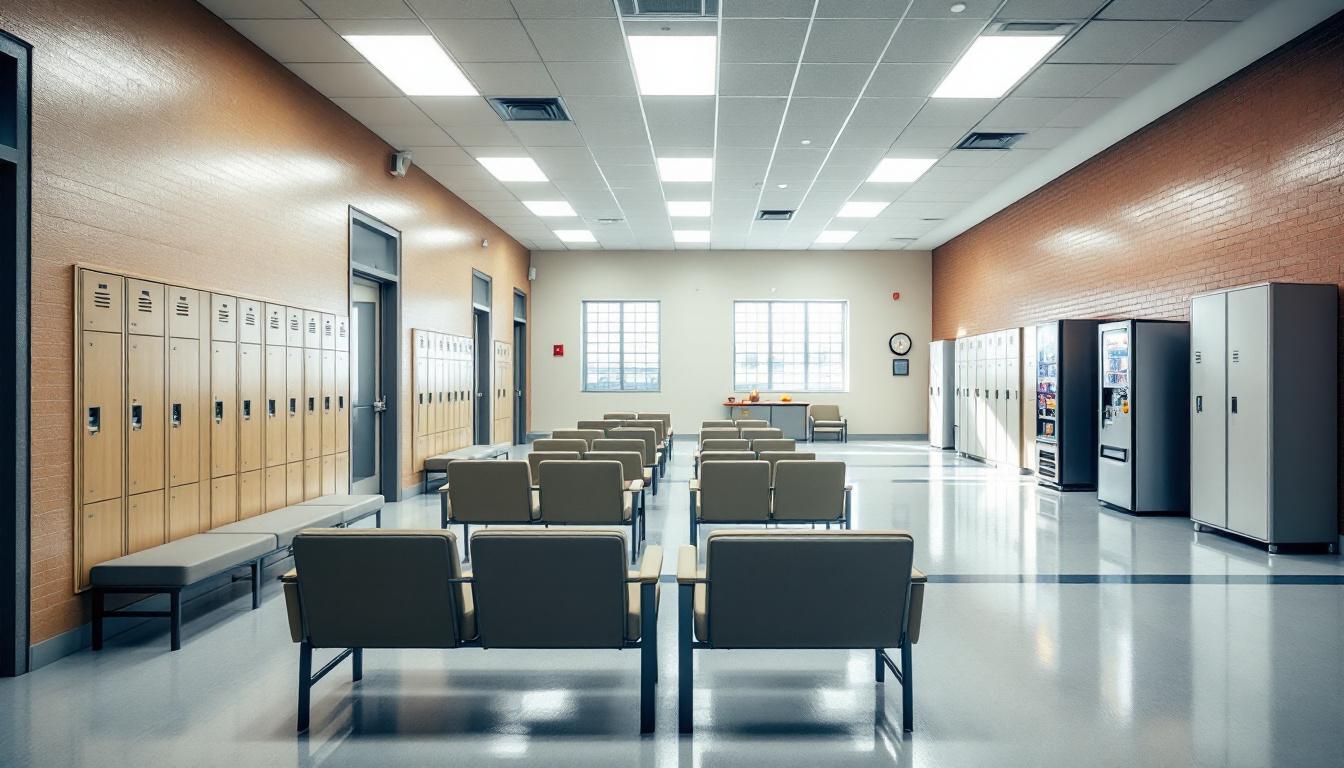
The rhythm of structured schedules now governs every aspect of residential life, with clearly defined periods for meals, programming, and personal time that residents regularly follow throughout each day. This predictable framework typically begins with early morning wake-up calls, followed by scheduled meal times in designated dining areas where residents gather for breakfast, lunch, and dinner served at consistent intervals. The facility generally maintains organized count times and movement procedures that help establish a sense of order, while residents also participate in various work assignments that may include kitchen duties, maintenance tasks, or facility cleaning responsibilities.
Living accommodations at the facility typically consist of shared housing units where residents are assigned beds and personal storage space for their approved belongings. The dormitory-style arrangements usually provide basic amenities including restroom facilities, common areas for socializing during designated free time, and access to commissary services where residents can purchase additional items with funds from their accounts. Also, the facility generally maintains policies regarding personal property, allowing residents to keep certain approved items while ensuring security protocols are followed throughout the housing areas.
Programming schedules deliver structure through educational opportunities, recreational activities, and library access that residents may participate in during designated time periods. However, these activities are typically balanced with work assignments and facility operations that help maintain daily routines. Visitation policies usually allow family members and approved contacts to visit during scheduled hours, while telephone access and mail services provide additional means for residents to maintain connections with their support systems outside the facility. The combination of structured programming, work responsibilities, and family contact opportunities generally helps create a framework that supports residents while they navigate their time at the facility.
Ready to Connect?
Start communicating with your loved one today
Search for an Inmate

